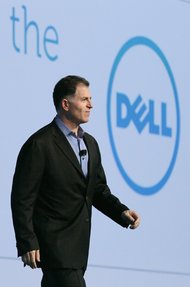Tesla Motors on Wednesday announced plans to tap the markets for more cash, a move that will buy it time to meet its ambitious goals but will also fuel debate over its prospects.
Tesla, the maker of electric cars founded and led by the entrepreneur Elon Musk, said it hoped to raise approximately $830 million by selling new shares and debtlike securities. The company said that Mr. Musk personally planned to buy $100 million of shares in the offering.
The plans could raise questions about the company’s ability to generate cash flows from its operations. Last week in an investor conference call, Mr. Musk played down the notion that Tesla would soon tap the public markets to raise new money. “We don’t have any plans right now to raise funding,” he said.
Tesla’s main product, a luxury sedan called the Model S, was the subject of New York Times articles this year involving a test drive of the car and its charging capacity. Mr. Musk has repeatedly challenged the articles, saying they were unfair.
Since then, however, Tesla has generated a stream of positive headlines, including a glowing review this month for the Model S from Consumer Reports.
The financing announced on Wednesday could prove a pivotal development in the intense debate over Tesla’s future.
The company’s shares have risen by 150 percent this year as more investors have started to express belief that the company will make electric vehicles that people will flock to buy because they perform as well as gasoline cars.
Other investors, however, remain unconvinced. They have bet against Tesla’s shares, saying they believe there is not much of a market for its cars beyond a small group of enthusiasts. These skeptics say they think that excitement has evolved into a stock mania. Tesla’s market value, nearly $10 billion, now exceeds that of Fiat. But the investors who placed those skeptical bets, called short-sellers in stock-market parlance, have suffered heavy losses as Tesla shares have soared. In fact, because of the paradoxical dynamics of short-selling, when these investors unwind their negative Tesla bets, they help force the company’s shares even higher. That phenomenon partly explains why Tesla’s stock is up 50 percent in just the last five days.
“Right now, Tesla is a story stock,” said Carter W. Driscoll, who analyzes clean-technology companies for Ascendiant CapitalMarkets. “Let’s be realistic here, they’ve only produced a quarter’s worth of vehicles.”
For investors betting against the shares, that skepticism will have been particularly painful in recent days. For Tesla, though, the meteoric spike in its shares presents an attractive opportunity to raise money without hurting existing shareholders too much.
“You have to give them kudos for their timing,” Mr. Driscoll said.
The company will take in the money in two ways: it will offer new shares on the public markets to investors; and it will raise $450 million from the debtlike securities, which the company will have to pay back in 2018. The company expects to price the offerings after the close of regular trading on Thursday, according to Sarah Meron, a Tesla spokeswoman.
The company said some of the money would be used to pay down a big federal loan that helped it set up production facilities for the Model S.
Critics of the Obama administration’s clean-energy financing program have focused on the Tesla loan. In last year’s presidential campaign, Mitt Romney included Tesla in group of companies he called “losers.”
The company has about $440 million outstanding on the loan, which was made by the Energy Department. Ms. Meron declined to say when the company would pay off the loan.
The cash from the loan also gives Tesla an important cushion to fall back on if its young operations stutter. During the investor call last week, Mr. Musk did say the company might tap markets to protect itself against “some sort of risk event.”
While buying time for Tesla, the decision to raise cash could also end up emboldening critics who said they believed that Tesla was going to experience weak cash flows from its operations this year. In the investor call last week, Tesla executives did not project that cash flows would be positive in the second quarter. They also suggested a decline was possible in North American sales as the year progresses.
The company has also stopped giving out the number reservations in place for its cars, a metric that investors had previously found useful for assessing future demand.
Article source: http://dealbook.nytimes.com/2013/05/15/tesla-motors-bid-for-cash-may-also-fuel-critics/?partner=rss&emc=rss




